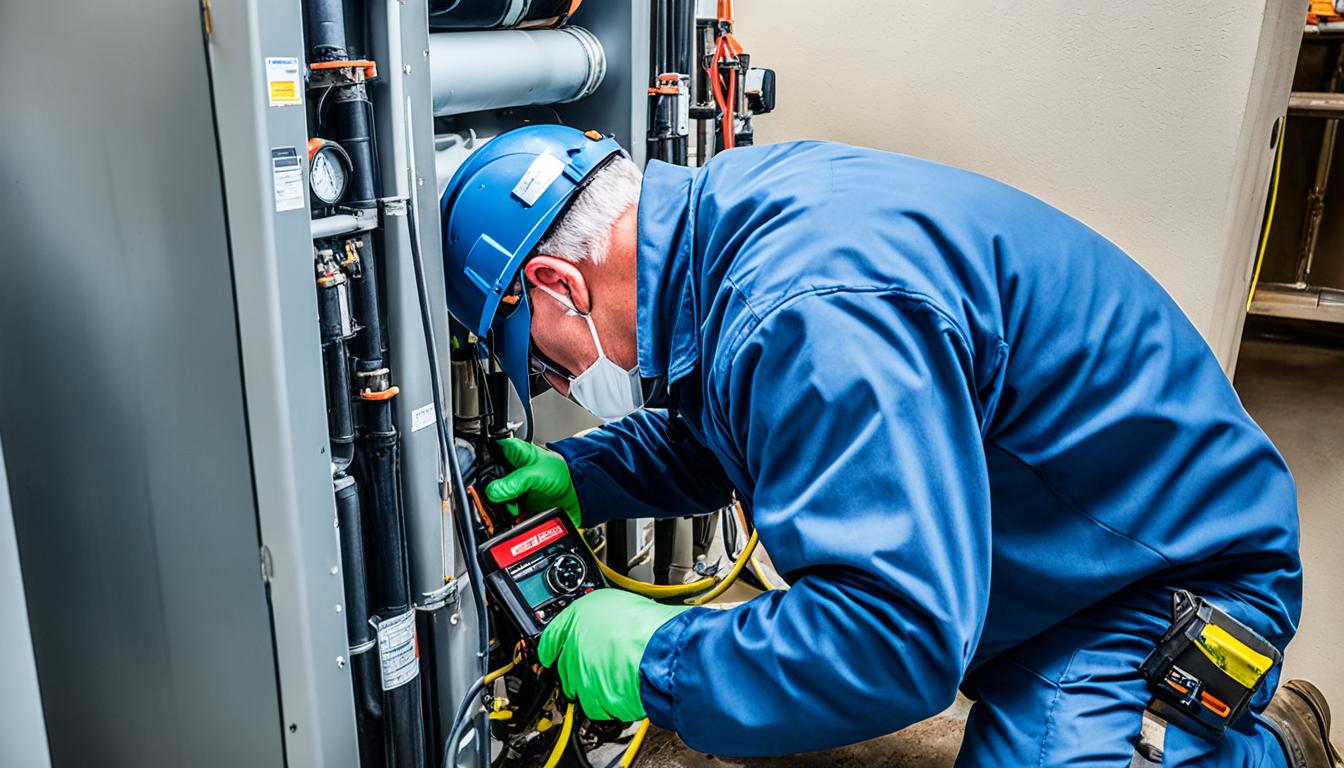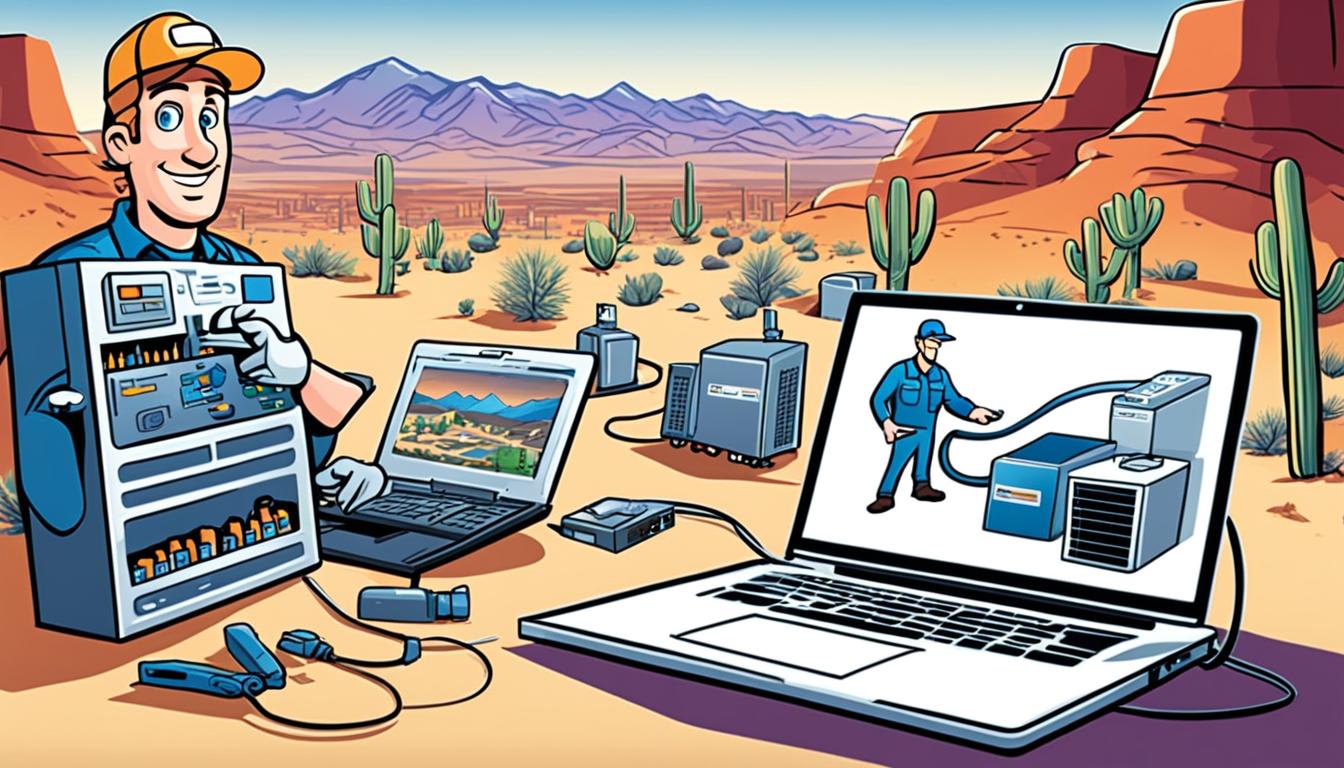Imagine a scorching summer day. The temperature outside is unbearable, and you eagerly step into your home, hoping for a refreshing blast of cool air from your trusty air conditioning system. But instead, you’re greeted with warm, stifling air. Your heart sinks, and a sense of frustration washes over you.
As an AC repair contractor, you understand the importance of keeping cooling systems running smoothly and efficiently. But what happens when these systems encounter leaks in flammable refrigerants?
Flammable refrigerants bring forth a unique set of challenges. Beyond the need for effective leak prevention, the safety implications cannot be ignored. The repercussions of mishandling leaks in these systems can be catastrophic, posing a threat to both the environment and human well-being. So, how do AC repair contractors tackle this issue, ensuring safety while maintaining the optimal performance of cooling systems?
In this article, we will delve into the world of flammable refrigerants and explore the strategies AC repair contractors employ to detect, prevent, and effectively handle leaks. By understanding the best practices and safety measures involved, you’ll be equipped with the knowledge to confidently address leaks in flammable refrigerants and safeguard both your clients and the environment.
Key Takeaways:
- Leak prevention is crucial when dealing with flammable refrigerants to ensure safety and preserve system efficiency.
- AC repair contractors employ various techniques, such as soldering, brazing, and component replacement, to repair leaks in systems.
- Methods like visual inspection, audible sound, and electronic leak detectors aid in detecting leaks in flammable refrigerants.
- Safety measures, including evaluating the jobsite for ignition sources and proper grounding, are essential for handling flammable refrigerant leaks.
- Regular inspections, maintenance, and adherence to manufacturer recommendations can help prevent and manage leaks effectively.
Safety Measures for Handling Leaks in Flammable Refrigerants
When dealing with leaks in flammable refrigerants, your top priority should be safety. By implementing proper safety measures, you can protect yourself, your team, and the environment from potential hazards.
Before starting any work, it’s important to evaluate the jobsite for possible ignition sources or flammable vapors. This assessment will help you identify potential risks and take appropriate precautions.
To create a safe work area, use cones, construction horses, or barriers to clearly mark off the space. This will ensure that unauthorized personnel stay away from the area and minimize the risk of accidents.
Prior to installing flammable refrigerant equipment, always ensure that the equipment is approved for the specific site and designated area. This step is crucial to prevent any safety issues or violations.
Proper grounding of the system is essential when working with flammable refrigerants. Grounding helps prevent electrical hazards and ensures the safe operation of the equipment.
It’s important to be aware of the maximum allowable charge for A2L equipment. The allowable charge depends on factors such as system design, capacity, and indoor cubic volume. Adhering to these guidelines will prevent overcharging and reduce the risk of leaks.
Follow proper evacuation, charging, and recovery techniques specific to flammable refrigerants. This includes using vacuum pumps and recovery tools that are rated for A2L refrigerants. Using the right equipment ensures a safe and efficient process.
When performing repairs, take precautions to discharge capacitors safely and ensure proper grounding of the equipment. This will minimize the risk of electrical accidents and ensure the safety of both you and the system.
By following these safety measures, you can handle flammable refrigerant leaks with confidence, ensuring the well-being of everyone involved and maintaining a safe working environment.
Preventing and Managing Leaks in Flammable Refrigerants
As an AC repair contractor, it is essential to take proactive steps in preventing and effectively managing leaks in flammable refrigerants to ensure system safety and environmental protection. Conducting regular inspections and maintenance plays a crucial role in identifying potential leaks before they escalate into more significant issues.
During inspections, visually inspect fittings for any oil residue and be vigilant for audible hissing sounds within the system. Additionally, implement leak detection methods such as the halide torch, ultrasonic leak detector, electronic leak detector, soap bubble test, and standing pressure test to identify any leak areas accurately. Following manufacturer’s recommendations for equipment installation and ensuring proper grounding are vital in preventing leaks. Pay attention to the charge size of the system and the cubic feet of airspace served by the equipment, as these factors significantly impact leak prevention.
AC repair contractors must be aware of the allowable charge classifications (M1 and M2) for A2L systems and any associated mitigation strategies. Adhering to proper evacuation, flushing, and charging procedures is critical. Ensure accurate recovery techniques and dispose of refrigerant cylinders safely to protect both the system and the environment. By implementing these best practices, you can effectively prevent, detect, and address leaks in flammable refrigerants, safeguarding the system’s integrity and promoting environmental responsibility.
In conclusion, preventing and managing leaks in flammable refrigerants requires a proactive approach from AC repair contractors. Conducting regular inspections, following manufacturer’s recommendations, paying attention to system charge size and airspace, and adhering to proper evacuation and recovery procedures are essential steps. By incorporating these best practices into your maintenance routines, you can effectively prevent leaks and ensure the safety of both the system and the environment.





0 Comments